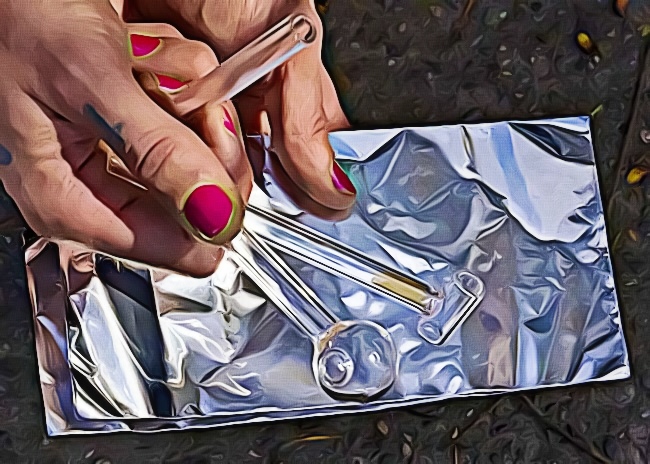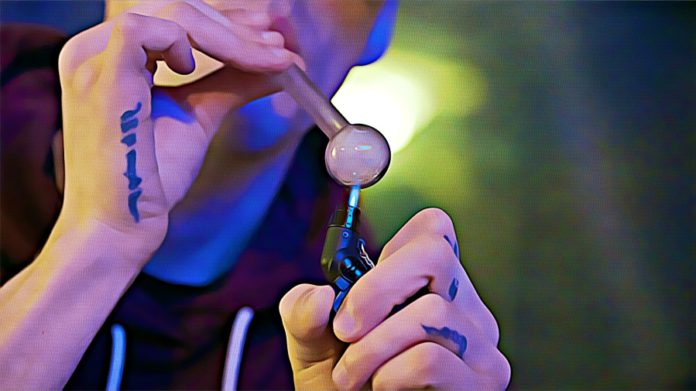Meth exposure dropped with the adoption of the Methamphetamine Act in 2005. However, specialists have discovered that it appears to be on the rise once more across the United States.
Meth usage increased from 30% to 47% in adults under the age of 40 between 2000 and 2009. Many experts feel that tighter and more proactive procedures are needed than what is already in place.
However, one of the most terrifying truths regarding meth is how it affects the ecosystem. To identify the scent of meth, you must first understand how it is created. Some of the chemicals involved are quite potent home cleansers.
You don’t want to be caught off guard if your residence was a meth lab. Continue reading to learn about the scents and what to do!
What Does Meth Smell Like?
If you suspect that someone is using methamphetamine, it is important to be able to identify the signs and symptoms of meth use. One of the most distinctive and identifying factors of meth use is the smell. Methamphetamines have a strong, pungent smell that is often described as similar to that of cleaning products. The chemicals used to make methamphetamines, such as household cleaners, contribute to this distinct smell.
If you believe that someone you know is using methamphetamine, it is important to get them help immediately. Methamphetamine addiction can lead to serious health consequences, including organ damage, psychotic behavior, and death.
Why Does Meth Smell Like That?
Methamphetamine is made using a variety of chemicals, many of which are household cleaners. These chemicals include anhydrous ammonia, lye, and red phosphorus. When these chemicals are combined, they produce a powerful and pungent smell. This smell is often described as similar to that of cleaning products.
What Chemicals Causes That Meth Smell?
Anhydrous ammonia, lye, and red phosphorus are all chemicals used in the production of methamphetamine. These chemicals combine to create a powerful and pungent smell. This smell is often described as similar to that of cleaning products.
How Is Meth Made?
A multitude of chemicals and extraction techniques are used in the production of meth. Understanding the process of manufacturing meth is critical in determining where it is produced.
First, people who make meth require a huge quantity of amphetamines. Cold medicines and other over the counter medications contain this. Because these items are so often used in the production of meth, retailers were forced to limit daily sales.
The substance is subsequently extracted by the lab’s owner using ammonia and hydrochloric acid. These chemicals are commonly found in household cleaning and pool care products.
Finally, meth producers frequently use lithium batteries and harsh chemicals in the extraction process. As a result, many meth laboratories have an extremely unpleasant and pungent odor. They will also have huge amounts of garbage and waste.
What is a Meth Lab?
A meth lab is a place where methamphetamine is produced. These labs can be found in homes, apartments, motels, cars, and even in public places like parks. Meth labs are usually run by small groups of people who have a homebased operation. Largescale meth production typically takes place in commercial laboratories.
If you suspect that someone is running a meth lab, it is important to contact your local law enforcement immediately. Meth labs pose a serious danger to the people in the surrounding area. They can cause fires, explosions, and release harmful chemicals into the air.
What are the Dangers of Meth Lab Exposure?
Meth labs pose a serious danger to the people in the surrounding area. They can cause fires, explosions, and release harmful chemicals into the air. These chemicals can cause serious health problems, including respiratory problems, skin irritation, and damage to the liver, kidneys, and nervous system. If you suspect that you have been exposed to meth lab chemicals, it is important to seek medical attention immediately.
What Should You Do If You Suspect Meth Use or Production in Your Community?
Meth manufacture is harmful and can bring crime to the neighborhood, so if you believe you smell meth or see indicators of meth production, you should report it. You may be concerned about upsetting your neighbors who are making meth, but many law enforcement organizations and narcotics task forces enable civilians to provide anonymous information.
If you suspect meth manufacture and trafficking, call local law enforcement or a narcotics task force. Consider providing an anonymous tip on the internet. Even if you do not wish to stay anonymous, you should never handle the matter personally.
Confronting those who are creating meth might put you at risk, not just from retaliation from producers, but also from corrosive chemicals if you approach a house where meth is produced.
Also, bear in mind that if you observe evidence of a meth home in the area, there is a possibility that something else is going on, and your suspicions may be incorrect. Because law enforcement agents are trained to investigate drug trafficking charges, it is critical to submit concerns to them rather than investigating them yourself.

What Does Meth Taste Like?
Methamphetamines have a strong, bitter taste. This bitter taste is often described as similar to that of battery acid. The taste of methamphetamine can vary depending on the method of ingestion. Smoking meth will usually result in a stronger and more bitter taste while snorting meth will usually result in a milder taste.
What Does Meth Look Like?
Methamphetamine is a white, crystalline powder. It can also be found in the form of pills, capsules, or glass shards. Methamphetamine that is in the form of glass shards is known as “meth ice” and is typically smoked.
How to Tell if Someone Is on Meth
There are a variety of signs and symptoms that can indicate meth use. These signs and symptoms can vary depending on the individual and the severity of their addiction. However, there are some common signs and symptoms that are associated with meth use, including:
- Increased energy levels
- Decreased appetite
- Weight loss
- Insomnia
- Anxiety
- Paranoia
- Agitation
- aggression
- Hallucinations
- Delusions
If you suspect that someone you know is using methamphetamine, it is important to get them help immediately. Methamphetamine addiction can lead to serious health consequences, including organ damage, psychotic behavior, and death.
Treatment for Meth Abuse & Addiction
If you or someone you know is struggling with methamphetamine addiction, there is help available. There are various treatment options available for those struggling with meth addiction. These treatment options can vary depending on the individual and the severity of their addiction. However, some common treatment options for meth addiction include:
- Inpatient treatment
- Outpatient treatment
- Support groups
- Individual therapy
- Cognitive behavioral therapy
If you or someone you know is struggling with methamphetamine addiction, please seek help as soon as possible. Methamphetamine addiction is a serious condition that can lead to devastating consequences. There is help available, and recovery is possible.
Conclusion
Just because you can’t smell meth doesn’t mean it’s not happening. According to studies, methamphetamine manufacturing facilities can be polluted for weeks, months, or even years.
Meth residue may soak into carpet, furniture, curtains, and walls, and it is easily absorbed via the skin. Headaches, nausea and vomiting, eye irritation, and respiratory issues are all symptoms of meth residue exposure.
If you suspect that your home has been used as a methamphetamine lab, it is important to seek professional help to have the area cleaned and decontaminated. In some cases, it may be necessary to move out of the home until it has been properly cleaned.
Sources:
https://www.ojp.gov/pdffiles1/nij/grants/209730.pdf
















